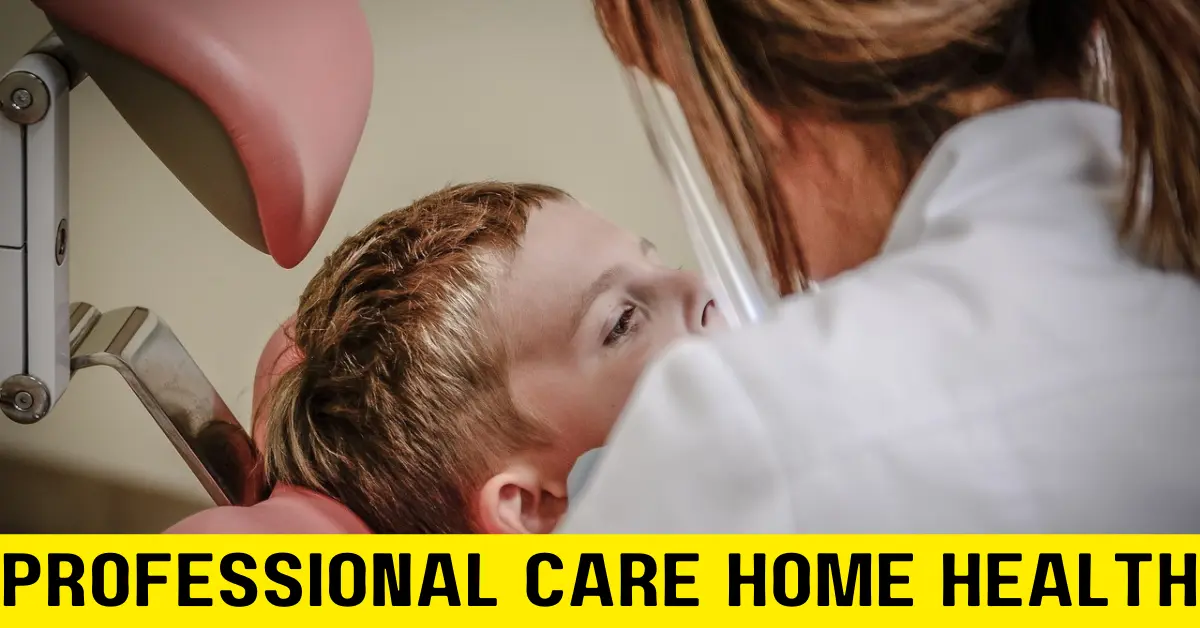It’s difficult to declare one singular project the “Best Youth Mental Health Project” as there are many fantastic initiatives tackling various aspects of youth mental health across the globe, each with unique strengths and target audiences. However, I can share some exemplary projects you might find inspiring about “Best Youth Mental Health Project”:
1. Headspace: This Australian-born app provides guided meditations, sleep exercises, and mindfulness training specifically designed for teens and young adults. Its engaging interface and gamified elements make it appealing for a tech-savvy generation.
2. The Trevor Project: This US-based organization offers crisis intervention and suicide prevention services to LGBTQ+ youth, a demographic experiencing disproportionately high rates of mental health struggles. Their 24/7 hotline and online chat services provide vital support for young people in crisis.
3. Sangit: This Indian project uses community-based theatre to raise awareness about mental health issues and challenge stigma in rural areas. By drawing on local cultural contexts and engaging storytelling, Sangit empowers young people to advocate for their own well-being and seek help when needed.
4. ReachOut.com: This Australian website provides comprehensive online resources and support for young people struggling with various mental health challenges. From informative articles and quizzes to forums and peer support groups, ReachOut.com offers a safe space for young people to learn, connect, and get help.
5. Grit Real Talk: Founded by Olympic gold medalist Michael Phelps, Grit Real Talk tackles mental health and emotional well-being among student-athletes. Through workshops, online resources, and athlete testimonials, the project encourages open conversations about mental health struggles and fosters resilience within young athletes.
Remember, the “Best Youth Mental Health Project” project for you might depend on your specific interests, location, and the needs of the young people you’re hoping to support. Exploring various initiatives and considering factors like accessibility, inclusivity, and evidence-based practices can help you identify projects that resonate with you and make a positive impact.
I hope this information helps you in your search for impactful youth mental health projects!
What are some Best Youth Mental Health Project?
There are many fantastic projects around the world tackling mental health in diverse and impactful ways. Here are a few examples of “Best Youth Mental Health Project” that cater to different needs and approaches:
1. Crisis Text Line: This US-based service provides free, 24/7 crisis intervention and support via text message for anyone in crisis. Trained crisis counselors connect with texters to offer emotional support, de-escalate situations, and help them find additional resources.
2. Mind: This UK-based charity campaigns and advocates for better mental health care and services. They also offer information and support to individuals and families affected by mental health issues, through helplines, online resources, and local support groups.
3. CALM: This UK-based organization focuses on suicide prevention, offering a confidential helpline and webchat service for anyone struggling with suicidal thoughts. They also provide bereavement support for those who have lost loved ones to suicide.
4. Headspace: This Australian-born app provides guided meditations, mindfulness exercises, and sleep tools specifically designed for teens and young adults. Its engaging interface and gamified elements make it appealing for a tech-savvy generation.
5. Sangit: This Indian project uses community-based theatre to raise awareness about mental health issues and challenge stigma in rural areas. By drawing on local cultural contexts and engaging storytelling, Sangit empowers young people to advocate for their own well-being and seek help when needed.
6. The Trevor Project: This US-based organization offers crisis intervention and suicide prevention services to LGBTQ+ youth, a demographic experiencing disproportionately high rates of mental health struggles. Their 24/7 hotline and online chat services provide vital support for young people in crisis.
7. ReachOut.com: This Australian website provides comprehensive online resources and support for young people struggling with various mental health challenges. From informative articles and quizzes to forums and peer support groups, ReachOut.com offers a safe space for young people to learn, connect, and get help.
8. Grit Real Talk: Founded by Olympic gold medalist Michael Phelps, Grit Real Talk tackles mental health and emotional well-being among student-athletes. Through workshops, online resources, and athlete testimonials, the project encourages open conversations about mental health struggles and fosters resilience within young athletes.
These are just a few examples, and there are countless other amazing projects making a difference “Best Youth Mental Health Project” in mental health awareness and support. The best project for you or someone you know will depend on individual needs and preferences. Remember, seeking help is a sign of strength, and there are many resources available to support you on your journey to mental well-being.
What are some good mental health research topics?
Choosing a good mental health research topic is crucial for a successful and impactful project. Here are some considerations to get you started:
1. Your interests and expertise: Select a topic that aligns with your personal interests and existing knowledge. This will keep you motivated and engaged throughout the research process.
2. Current trends and gaps in knowledge: Identify areas within mental health where research is lacking or where new developments are emerging. This could involve emerging treatment methods, specific demographic groups, or understudied mental health conditions.
3. Feasibility and accessibility: Consider the resources available to you, such as time, funding, and data access. Choose a topic that can be realistically researched within your constraints.
4. Potential for impact: Prioritize topics with the potential to contribute meaningfully to the field of mental health. This could involve improving diagnosis, treatment, prevention, or public understanding of mental health issues.
Here are some specific topic ideas categorized by area:
General mental health:
- The impact of social media and technology on mental health.
- The role of genetics in mental health disorders.
- The use of technology in mental health treatment.
- The impact of trauma and adversity on mental health.
- The intersection of mental health and physical health.
Specific disorders:
- The effectiveness of mindfulness-based interventions for anxiety disorders.
- Early identification and intervention for depression in adolescents.
- The relationship between social media and body image dissatisfaction in young adults.
- Cultural factors impacting access to mental health care for specific populations.
- The long-term outcomes of different treatment approaches for bipolar disorder.
Prevention and intervention:
- The effectiveness of school-based mental health programs.
- Stigma reduction initiatives for specific mental health conditions.
- Promoting mental well-being through workplace interventions.
- The role of community support systems in mental health recovery.
- Developing culturally sensitive mental health resources for diverse populations.
Remember, these are just suggestions, and the best topic for you will depend on your specific interests and resources.
Additional tips:
- Consult with experts in the field to get feedback on your ideas.
- Check existing research databases to see what has already been studied.
- Formulate a clear research question or hypothesis before starting your research.
- Be flexible and adapt your topic as needed throughout the research process.
I hope this helps you find a good mental health research topic!
What are the growing mental health issues in youth?
Unfortunately, there’s a concerning trend of rising mental health issues among young people around the world. Here are some of the most prominent ones:
1. Anxiety and Depression: These two conditions are the most common mental health struggles in youth, affecting millions globally. Rates of anxiety and depression have been steadily increasing over the past decade, with factors like academic pressure, social media use, and uncertainty about the future contributing to the rise.
2. Suicide: Tragically, suicide is a leading cause of death among young people, particularly in countries like the United States. The rates of suicidal ideation and attempts are also alarmingly high, highlighting the need for better access to mental health support for young people in crisis.
3. Eating Disorders: Eating disorders like anorexia nervosa, bulimia nervosa, and binge eating disorder are becoming increasingly common in youth, especially among girls. Body image dissatisfaction fueled by social media and societal pressures is a major contributing factor.
4. Substance Abuse: Rates of substance abuse, including alcohol, marijuana, and prescription drugs, are also on the rise among young people. This can be a coping mechanism for dealing with other mental health issues or simply a result of peer pressure and experimentation.
5. Social and Emotional Learning (SEL) Deficits: Many young people today lack the social and emotional skills needed to navigate challenging situations and build healthy relationships. This can lead to loneliness, isolation, and increased vulnerability to mental health problems.
Additional factors contributing to these growing mental health issues include:
- Cyberbullying and online harassment: The rise of social media has created new avenues for bullying and harassment, which can have a devastating impact on young people’s mental well-being.
- Increased academic pressure: The pressure to succeed in school is intense, and young people often feel overwhelmed and stressed.
- Family and relationship problems: Family conflict, divorce, and other relationship problems can take a toll on young people’s mental health.
- Economic insecurity: Financial worries and instability can contribute to anxiety and depression.
It’s important to remember that mental health issues are treatable, and there are many resources available to help young people. If you are concerned about the mental health of yourself or someone you know, please reach out for help. There are many hotlines, websites, and organizations that can provide support and guidance.
What are the most common mental health disorders in youth?
My previous response provided a good overview of several common mental health disorders in youth, but I can offer a more concise and focused answer regarding the most common:
- Anxiety Disorders: Affecting around 32% of adolescents, anxiety disorders top the list. This diverse group encompasses conditions like generalized anxiety, social anxiety, panic disorder, and phobias.
- Depression: Approximately 11% of adolescents experience depression, characterized by persistent sadness, hopelessness, and loss of interest.
- Attention Deficit Hyperactivity Disorder (ADHD): 9% of children aged 4-17 are diagnosed with ADHD, characterized by inattention, hyperactivity, and impulsivity.
These three disorders together represent a significant portion of youth mental health struggles. Remember, this is not an exhaustive list, and other conditions like eating disorders, substance abuse, and trauma-related disorders also play a role in the overall picture.
It’s crucial to emphasize that seeking help is vital if you or someone you know is struggling. Numerous resources are available, including hotlines, websites, and mental health professionals equipped to offer guidance and support.
What is a mental health project?
A mental health project can take many forms, depending on its goals, target audience, and resources. Here are some general categories to understand the breadth of mental health projects:
Awareness and education:
- Public campaigns: Raising awareness about specific mental health conditions, reducing stigma, and promoting mental well-being through campaigns, workshops, or online resources.
- School-based programs: Implementing social-emotional learning (SEL) curricula, peer support networks, or mental health awareness talks in schools.
- Community outreach: Organizing mental health fairs, support groups, or educational sessions in underserved communities.
Support and intervention:
- Hotlines and crisis text lines: Providing immediate support and intervention for individuals in crisis or experiencing suicidal thoughts.
- Therapy and counseling services: Offering affordable or accessible therapy options for various mental health needs.
- Peer support groups: Creating safe spaces for individuals to connect, share experiences, and offer mutual support.
Research and innovation:
- Clinical trials: Investigating new treatments or interventions for mental health conditions.
- Technology development: Building mental health apps, virtual reality therapy programs, or AI-powered tools to support individuals and healthcare professionals.
- Policy and advocacy: Researching and advocating for improved mental health policies, funding, and access to care.
Examples of specific mental health projects:
- Headspace: An app providing guided meditations and mindfulness exercises for teens and young adults.
- The Trevor Project: A suicide prevention and crisis intervention hotline for LGBTQ+ youth.
- Sangath: A project using community-based theatre to raise awareness about mental health in rural India.
- ReachOut.com: An Australian website offering online resources and support for young people struggling with mental health challenges.
Ultimately, a successful mental health project makes a positive impact on people’s mental well-being. It can be something as small as starting a peer support group in your community or as large as advocating for national policy changes. The key is to identify a need, leverage your resources, and take action to improve the mental health landscape.
I hope this explanation gives you a better understanding of the diverse world of mental health projects!
What are 10 examples of mental health?
It’s important to clarify that “mental health” isn’t a state of being, but rather a continuum of well-being. Instead of offering specific examples, I can share 10 indicators of good mental health that can help you assess your own well-being or that of someone you care about:
- Positive Emotions: Experiencing and expressing joy, optimism, gratitude, and contentment regularly.
- Healthy Relationships: Having strong and supportive connections with family, friends, and other loved ones.
- Sense of Purpose: Feeling motivated and having a sense of direction and meaning in life.
- Resilience: Being able to cope with challenges, adapt to change, and bounce back from setbacks.
- Self-Awareness: Understanding your thoughts, feelings, and needs, and accepting them without judgment.
- Healthy Coping Mechanisms: Employing positive strategies to manage stress, anxiety, and difficult emotions.
- Balanced Lifestyle: Maintaining healthy habits around sleep, exercise, nutrition, and leisure activities.
- Positive Self-Esteem: Having a healthy sense of self-worth and value, appreciating your strengths and accepting your limitations.
- Sense of Belonging: Feeling connected to something larger than yourself, such as a community, culture, or cause.
- Growth Mindset: Embracing lifelong learning, personal development, and taking opportunities to expand your skills and knowledge.
Remember, mental well-being is a journey, not a destination. These indicators are not absolutes but rather areas to prioritize for optimal mental health. If you feel you or someone you know needs support, don’t hesitate to reach out for professional help. There are numerous resources available, including hotlines, therapists, and support groups.




